PineCrest Gardens
Pinecrest Gardens is a lush paradise featuring tropical plants, rock formations and water features -- truly living up to its reputation as a hidden treasure. The garden contains approximately 4.3 acres of native forested wetland, with about 3.3 acres of tropical hardwood hammock and one acre of native cypress slough hammock.
Remnants of the original Snapper Creek streambed are located in the eastern portion of the property. The streambed runs northwest to southeast and exits the property near the original entrance to the site on Red Road. The streambed located on the garden property is the only portion of Snapper Creek that has not been altered. The site features a Karst landscape, which is formed by the dissolution of bedrock by subterranean drainage. The bedrock is oolitic limestone and has been used extensively as a building material at the site. The landscape features small caves, fissures and dramatic cliff overhangs. Solution holes, caused by erosion of the stone by both surface and subterranean water flow, contain water all year long and support fish, turtles, blue crabs and other wildlife. Sinkholes are also common on the property, and one is estimated to be approximately 30,000 years old.
The northeastern portion of Pinecrest Gardens features a one-acre cypress slough with bald cypress, a deciduous conifer, along with cypress knees, and an undergrowth of ferns. The cypress hammock was once part of the largest cypress forest in South Florida. And at one time, it was connected to the Big Cypress Swamp, which is located 50 miles west of Miami. Until Hurricane Andrew in 1992, the slough featured a number of trees over 100 feet tall. Unfortunately, about 60% of the tall trees were lost due to the storm. After the hurricane, seedlings began to naturally appear in the slough, which is a rarity. Many survived and have reached heights of around 15 feet.
A rock ridge shelf indicates a transition between the cypress and a hammock of hardwood trees to the southwest. The tropical hardwood hammock, consisting of live oak, covers 3.3 acres. Pinecrest Gardens features a diverse selection of trees, including a Talipot Palm, which is native to India and Sri Lanka, and is one of the largest palm species in the world. The tree on this site is documented as the largest living Talipot Palm in the United States.
As the park was expanded, native pine trees were cleared from the western portion of the site and replaced with palms, figs, rubber trees, and banana plants. A banyan tree was planted near the center of the site in 1947 to help fill in the cleared areas. The banyan, a type of fig tree, develops prop roots that extend vertically down from its horizontal branches. Today, the signature Banyan Tree at the center of the property has spread to cover over ¾ of an acre.
In addition to the aforementioned trees, the site features over 1,000 varieties of rare exotic and tropical plants, including many types of ferns, fig trees, orchids, hibiscus, and other flowering plants. Other notable trees include a 100-year-old coco plum, a pond apple and a sausage tree. An open grassy meadow, with diverse plantings around its perimeter, is situated near the center of the site. A succulent garden, which was developed in the 1960s, is located south of Swan Lake.
Pinecrest Gardens is also home to one of the most diverse desert gardens in Florida and featuring many plants imported from Mexico.
The elements of the site are accessed via meandering curved pedestrian pathways that link all of the buildings and major structures. Parts of the path are paved with brick laid in decorative patterns. The brick paving is located in the western portion of the site in the areas to the north and south of the Meadow. Some areas feature mosaics made from broken or cut brick pieces. The inlaid patterns feature leaves, flowers, flamingoes, snails, and various shapes.



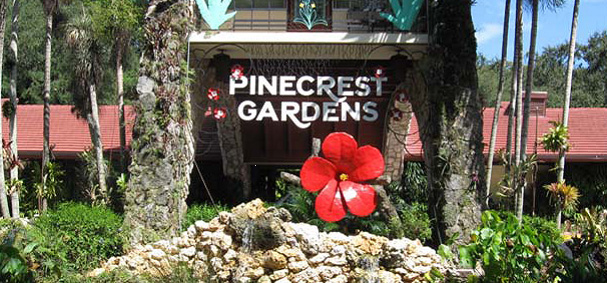 Pinecrest Gardens
Pinecrest Gardens 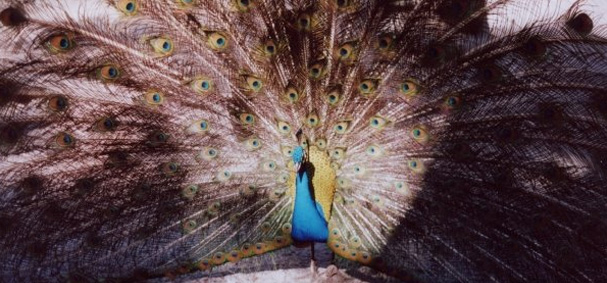 Pinecrest Gardens
Pinecrest Gardens 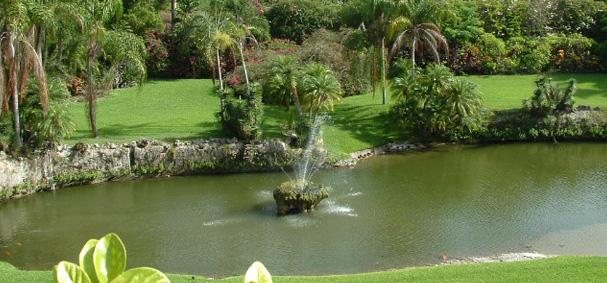 Pinecrest Gardens
Pinecrest Gardens 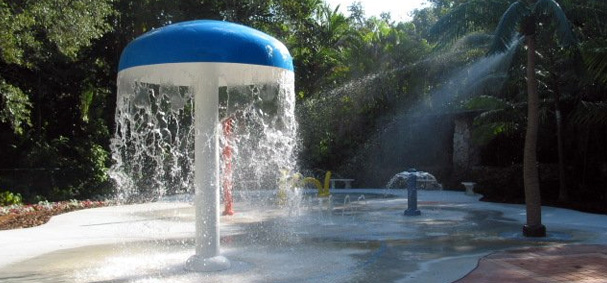 Pinecrest Gardens
Pinecrest Gardens 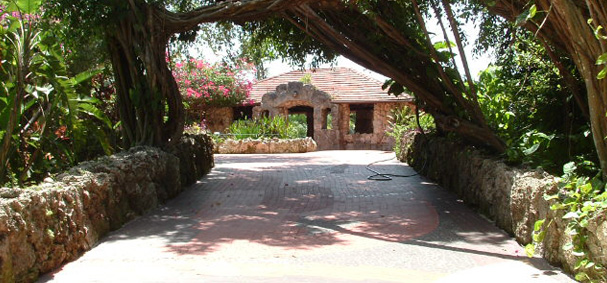 Pinecrest Gardens
Pinecrest Gardens